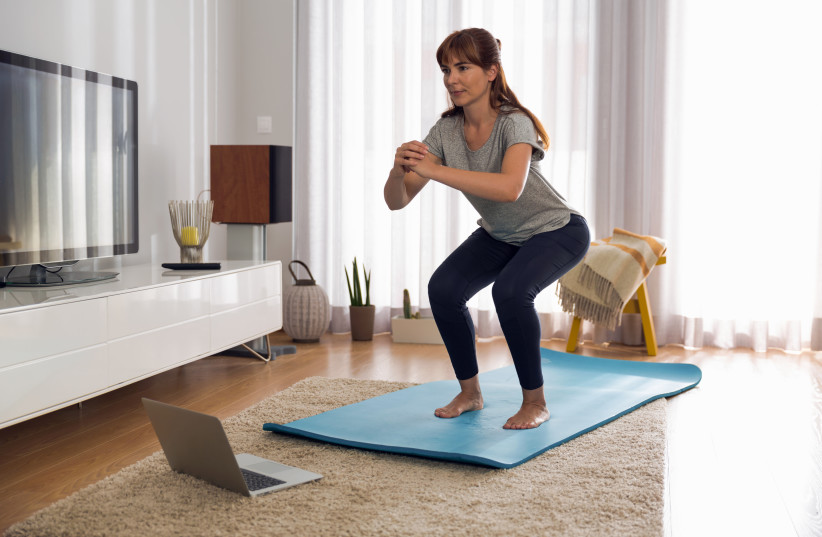Exercise is one of the best things you can do to maintain your health, whether you’re generally healthy or if you have medical problems. But, to enjoy exercise it’s important to make sure your workout suits your needs and limitations and doesn’t cause harm that will overshadow its benefits.
It’s not easy to find the perfect balance between benefit and risk and one example is training with other people in enclosed gyms. Several studies have shown that training this way may increase the risk of infectious diseases. This threat became significant during COVID-19 when gyms and country clubs were a significant source of concern that they would be disease vectors.
The source of concern is that people exercising in closed spaces emit aerosol particles into the air which carry disease-causing agents. Data has shown that people at rest emit an average of 5 to 15 liters of aerosols per minute, while during exercise this figure rises to 100 to 200 liters per minute on average.
Yet until recently, scientists had difficulty understanding how the intensity, i.e. the degree of difficulty, of exercise affects the emission of aerosol particles and the risk of getting sick.
Now, experts in biology, physical activity and engineering from Germany have teamed up to explore the subject in a creative way. In their study, experts sought to examine the degree to which working out is dangerous and their conclusions can reassure or stress you depending on how you choose to exercise.
Who’s most at risk?
For the benefit of the study, healthy volunteers between the ages of 18 and 40 were recruited and asked to participate in spinning training, attached to a special mask that covers the mouth and nose and had two essential actions.
First, it filtered the air that the subjects inhaled and removed air-borne aerosols. Also, a special valve measured the number of aerosol particles emitted during training.The level of difficulty of the training gradually increased from a state of complete rest to a state of maximum effort and exhaustion. Surprisingly, researchers found that moderate exercise didn’t cause a dramatic increase in the rate of particles emitted into the air.
So researchers concluded that people who perform "simple" activities such as jogging, lifting weights or cycling at a reasonable pace don’t significantly increase the risk of others around them getting sick.
Researchers say the problem begins when doing high-intensity workouts like interval training, which has recently become popular because it burns many calories in less time, even on rest days after training. These workouts allow for rapid improvement of physiological abilities and muscle development, but as mentioned, they may be a source of concern in enclosed spaces.
Prof. Henning Wachraj, Biology specialist of physical training at the University of Munich, explained that in high-intensity training there’s an exponential increase in pollutant emission. We learned this during Covid-19 as it expresses a rapid and wide doubling of the particle circumference as the difficulty of the training increases.
"Based on our results, it’s important to distinguish between moderate endurance training and high to maximum intensity training. Due to the sharp increase in aerosol emissions in intensive training, special protective measures are needed in such training, because without them people are at a much higher risk."
The coronavirus and its dramatic impact on our lives led to research to prevent similar viruses from affecting us again and shutting us in homes again for extended periods. This study is designed to help with this and its purpose is to suggest easy ways to reduce infections in closed gyms.
Researchers emphasize that for most people training doesn’t significantly increase the risk of infection, so people should exercise intensively but it’s also recommended that gyms have separate areas for high-intensity training with significant ventilation and a large distance between people.

